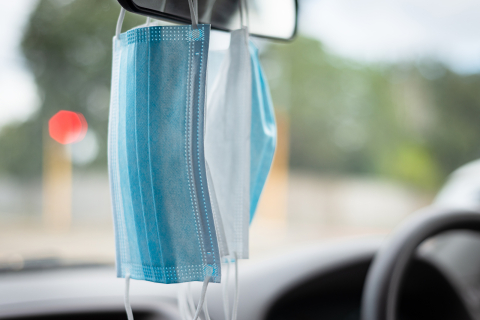Fresh or filtered air can reduce your risk of catching or spreading COVID-19. Opening windows helps protect you, your whānau and others.
When an infected person breathes, speaks, coughs or sneezes, they may spread particles containing the virus.
COVID-19 mostly spreads by aerosols — small virus particles that can stay in the air for minutes to hours. Good ventilation helps remove virus particles in the air.

If you have COVID-19 you must self-isolate for 7 days. You must stay home and avoid contact with people in your household.
Keep the air in your room fresh. If you can, open windows on different sides of the room to help airflow.
To stop virus particles spreading, reduce airflow from your room to other parts of your home:
- Block gaps under your door with a towel or draught stopper.
- Before opening the door into shared spaces, open your window for at least 5 minutes to freshen the air. Close the window before you open the door.
- In a shared bathroom, switch on the extractor fan or open a window.
- Close the toilet lid before you flush.
We encourage you to let in fresh air every day, including after someone visits your home.
If you can, partly open a window about 5cm for most of the day. Or open windows for at least 15 minutes as often as possible, whenever it is practical to do so.
Try 1 or more of these ways to remove stale air:
- Open windows or doors on opposite sides of a room to help airflow.
- Open doors between rooms to ventilate hallways and spaces without windows.
- In kitchens and bathrooms, switch on the extractor fan or open a window.
- Open higher windows wider than lower windows. This helps reduce draughts.
- If your windows do not open, check if your ventilation system filters (cleans) the air.
Steamed-up windows can be a sign of low ventilation
COVID-19 and ventilation | Ministry of Health
In cold or wet weather
Try 1 or more of these ways to refresh air without letting rooms get chilly or damp:
- Partly open a window for most of the day, for example a 5cm opening.
- Fully open a window or door for 3 to 5 minutes every hour.
- Open a window whenever you leave the room, closing the door behind you.
You do not have to leave windows or doors open all the time.
In homes with heat pumps or ventilation systems
Heat pumps, air conditioners and ceiling fans do not refresh the air. Instead, they move around air already in a room. You will need to open doors or windows to remove stale air and let in fresh air.
If you have a home ventilation system, check if it recycles air or filters air:
- If it recycles air, you need to open windows or doors to move stale air out and let in fresh air.
- If it filters or cleans air, this helps remove stale air and reduce the risk of virus particles spreading.
Air cleaning technologies | Ministry of Health
In rental properties
Landlords must provide good ventilation. If you live in or own a rental property, check ventilation rules on the Tenancy Services website.
Virus particles can build up quickly in crowded places such as buses or trains. It helps to sit or stand close to the door as airflow will be better.
Open a window on the bus or train if you can. Taxis and ride-share services often ask passengers to open windows.
We encourage you to wear a face mask in crowded places such as public transport.
